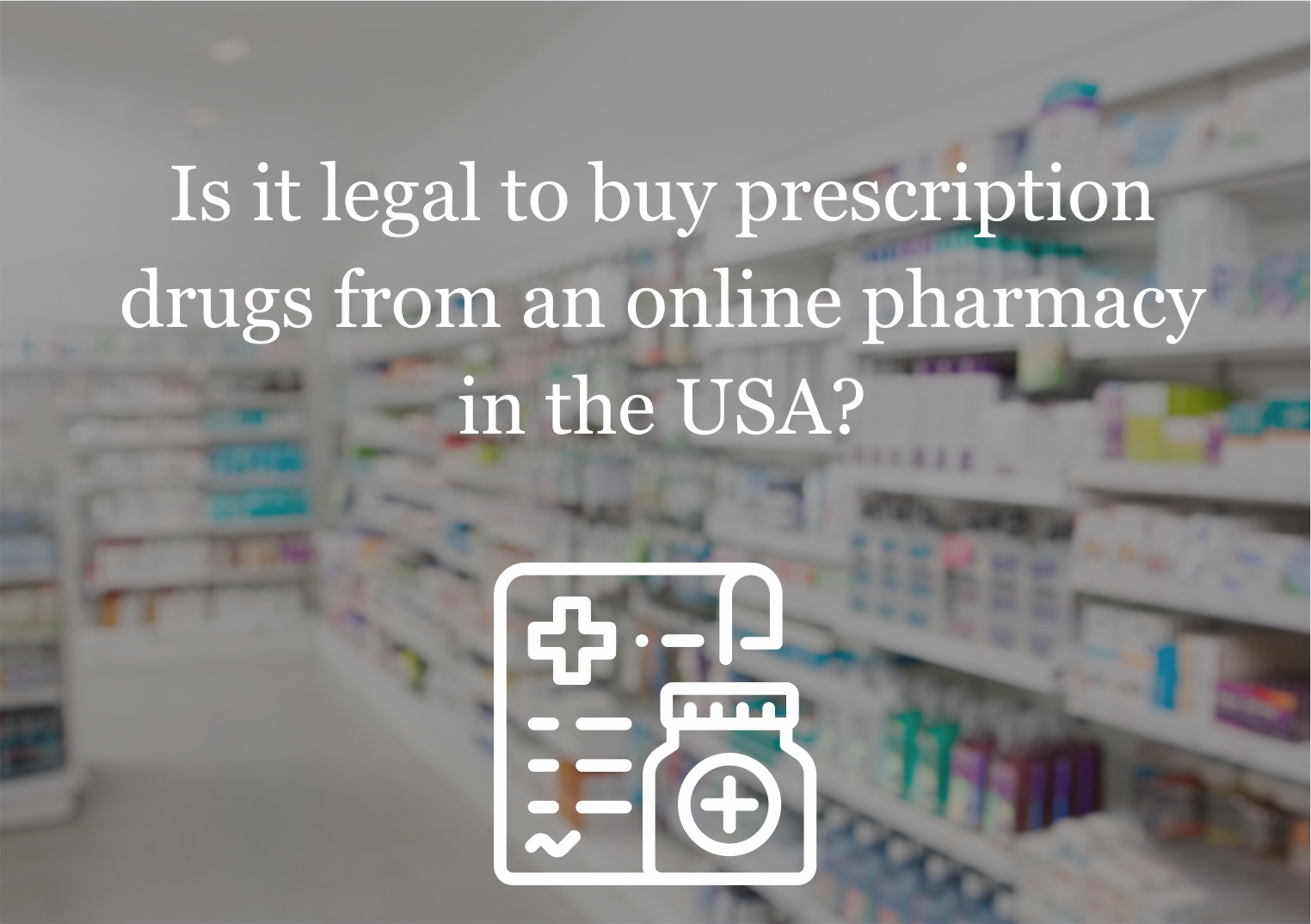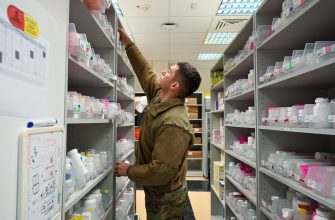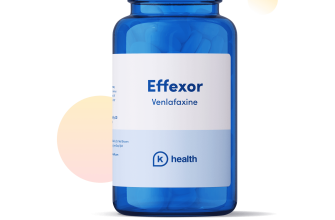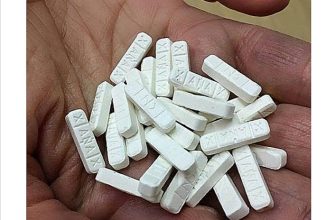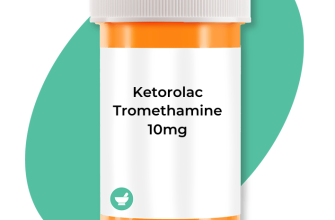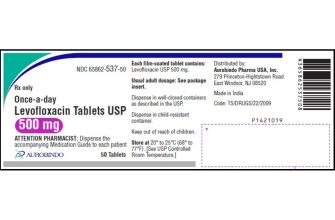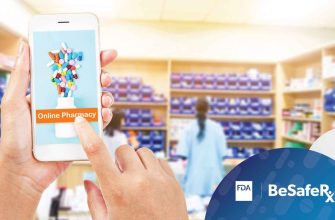Need prescription medication? Verify your pharmacy’s legitimacy through the National Association of Boards of Pharmacy (NABP) Verified Internet Pharmacy Practice Sites® (VIPPS®) program. This accreditation assures compliance with U.S. pharmacy laws and standards, guaranteeing a safe and secure online experience.
Finding a legitimate online pharmacy requires diligence. Check for a physical address, licensed pharmacists on staff, and a clear return policy. Legitimate pharmacies also clearly display their contact information, including phone numbers and email addresses, allowing easy communication. Avoid sites lacking this transparency.
Always prioritize your safety. Compare prices from multiple VIPPS accredited pharmacies before making a purchase. Understand that significant price differences may indicate a counterfeit operation. Remember that a lower price isn’t always a better deal; it often suggests compromised quality or safety. Protecting your health is paramount.
Before ordering, confirm your medication’s authenticity by contacting your physician or consulting the FDA’s drug database. This extra step safeguards you from potentially harmful counterfeit drugs. Use only pharmacies that require a valid prescription from a licensed medical professional for dispensing medication.
Finally, safeguard your personal information. Look for secure websites using HTTPS protocol (indicated by a padlock icon in your browser’s address bar). Reputable pharmacies employ robust security measures to protect sensitive patient data from unauthorized access. A secure transaction is an integral part of a reliable online pharmacy experience.
- Legal USA Online Pharmacies: A Comprehensive Guide
- Choosing a Reliable Online Pharmacy
- Understanding Prescription Requirements
- Medication Safety and Delivery
- Addressing Potential Concerns
- Contact Information and Support
- Final Considerations
- Identifying Legitimate Online Pharmacies
- Verifying Pharmacist Credentials and Licenses
- Using the National Association of Boards of Pharmacy (NABP)
- Ensuring Secure Online Transactions and Data Protection
- Protecting Your Personal Information
- Secure Payment Methods
- Understanding Prescription Drug Regulations and Requirements
- Verifying Online Pharmacies
- Understanding Your Medication
- Comparing Prices and Evaluating Cost-Effectiveness
- Recognizing and Avoiding Scam Websites and Counterfeit Drugs
- Exploring Patient Reviews and Testimonials (with caution)
- Understanding Your Rights as a Patient Using Online Pharmacies
- Navigating Insurance Coverage for Online Pharmacy Purchases
Legal USA Online Pharmacies: A Comprehensive Guide
First, verify a pharmacy’s legitimacy through the National Association of Boards of Pharmacy (NABP) Verified Internet Pharmacy Practice Sites (VIPPS) program. This accreditation confirms adherence to U.S. state and federal regulations. Look for the VIPPS seal on their website.
Choosing a Reliable Online Pharmacy
Always check the pharmacy’s license and physical address. Legitimate pharmacies will openly display this information. Confirm the pharmacist’s credentials and verify they have a valid license to practice in your state.
Read online reviews from multiple sources. Pay attention to reviews describing order accuracy, delivery times, and customer service responsiveness. Be wary of overwhelmingly positive reviews; sometimes these can be fabricated.
Prioritize pharmacies that offer secure checkout processes. Look for encrypted connections (HTTPS) and robust security measures to protect your personal and financial information. Avoid pharmacies lacking these safeguards.
Understanding Prescription Requirements
Online pharmacies require a valid prescription from a licensed U.S. physician. Never attempt to obtain prescriptions illegally. If you require a prescription renewal, contact your doctor. Never share your prescription information online.
Medication Safety and Delivery
Confirm the pharmacy’s return policy and procedures. Understand how they handle damaged or lost shipments. Ensure the medications arrive in tamper-evident packaging. Report any concerns immediately to the pharmacy and relevant authorities.
Addressing Potential Concerns
Be cautious of unusually low prices. Prices significantly below market average might indicate counterfeit or substandard medications. If something seems too good to be true, it probably is.
Contact Information and Support
Check the pharmacy’s contact information. A legitimate pharmacy will offer multiple ways to get in touch, including phone, email, and a physical address. They should offer clear and prompt responses to any questions or problems you may have.
Final Considerations
Report any suspicious online pharmacies to the FDA and your state’s board of pharmacy. Your vigilance helps protect others from potentially harmful practices. Prioritize your health and safety by only using accredited and reputable online pharmacies.
Identifying Legitimate Online Pharmacies
Check the pharmacy’s license and accreditation. Look for verification from the National Association of Boards of Pharmacy (NABP) or state licensing boards. A legitimate pharmacy will readily display this information.
Verify the pharmacist’s credentials. Legitimate online pharmacies employ licensed pharmacists. You should be able to find contact information for these professionals on the website.
Inspect the website’s security. Ensure the site uses HTTPS (the padlock icon in your browser’s address bar) and has a privacy policy clearly outlining data protection measures.
Scrutinize their contact information. A legitimate pharmacy will provide a physical address, phone number, and email address. Avoid pharmacies that only offer contact through obscure means.
Review customer testimonials and reviews. While not foolproof, authentic reviews from verified customers can offer insight into a pharmacy’s reliability and customer service.
Compare prices cautiously. While lower prices might be tempting, significantly cheaper medications should raise red flags. Counterfeit drugs are often sold at discounted rates.
| Feature | Legitimate Pharmacy | Illegitimate Pharmacy |
|---|---|---|
| NABP Verification | Displayed prominently | Absent or difficult to find |
| Pharmacist Contact | Easily accessible | Vague or missing |
| Website Security | HTTPS enabled | HTTP or no security indicators |
| Contact Information | Clear and comprehensive | Limited or suspicious |
| Pricing | Competitive, but not unreasonably low | Significantly lower than market prices |
Report suspicious online pharmacies to the authorities. If you encounter a pharmacy that exhibits red flags, report it to the FDA or your state’s board of pharmacy.
Verifying Pharmacist Credentials and Licenses
Check the pharmacist’s license status directly with your state’s board of pharmacy. Each state maintains its own registry; use a search engine to find your state’s licensing board website. Look for a license verification tool or database on their site. You’ll typically need to provide the pharmacist’s name and license number.
Using the National Association of Boards of Pharmacy (NABP)
The NABP offers a helpful tool called the “Verify a Pharmacist” service. This allows you to cross-reference license information across multiple states. This is especially useful if you suspect a pharmacist may be operating outside their licensed jurisdiction.
Always examine the pharmacy’s website for contact information. Legitimate pharmacies will readily provide details about their pharmacists and their credentials. If a pharmacy avoids transparency regarding their pharmacists’ licensing, proceed with caution. Remember that a valid license is a baseline requirement; thorough vetting is always recommended.
Ensuring Secure Online Transactions and Data Protection
Look for pharmacies displaying the Norton Secured Seal or McAfee SECURE trustmark. These certifications indicate the pharmacy has undergone security audits and meets high standards for data protection. Verify the site uses HTTPS – the “s” signifies a secure connection, encrypting your information.
Protecting Your Personal Information
Check the pharmacy’s privacy policy. A transparent policy clearly outlines how they collect, use, and protect your personal data. Avoid pharmacies with vague or missing privacy policies. Look for mentions of compliance with HIPAA (Health Insurance Portability and Accountability Act) if you are a US resident, ensuring adherence to strict data protection regulations. Pharmacies should use robust encryption methods, such as 256-bit AES encryption, to safeguard your sensitive information during transmission. Confirm their server security measures include firewalls and intrusion detection systems.
Secure Payment Methods
Favor pharmacies accepting payments via established, secure gateways like PayPal or Stripe. These platforms offer buyer protection and robust fraud prevention measures. Avoid pharmacies that only accept wire transfers or unusual payment methods, as these can increase your risk of fraud. Always review your bank and credit card statements for unauthorized transactions following online purchases.
Understanding Prescription Drug Regulations and Requirements
Always obtain prescriptions from licensed medical professionals. This ensures your medication is appropriate for your condition and avoids potential risks. Verify your doctor’s license through your state’s medical board website.
Legitimate online pharmacies require a valid prescription before dispensing medication. Upload clear, legible images or a PDF of your prescription. Ensure all information, including your name, doctor’s information, and medication details, is visible and accurate.
Verifying Online Pharmacies
Check the pharmacy’s license with the relevant state board of pharmacy. Look for a physical address and contact information, avoiding pharmacies with only PO boxes. A secure website (HTTPS) and verifiable accreditation from recognized organizations, like the National Association of Boards of Pharmacy (NABP), signal greater trustworthiness.
Understanding Your Medication
Carefully read the medication label and the accompanying patient information leaflet. Understand dosage, potential side effects, and interactions with other drugs or food. Ask your doctor or pharmacist to clarify any uncertainties.
Never share your prescription medication with others. Incorrect usage poses serious health risks. Dispose of expired medications responsibly according to your local guidelines. Contact your pharmacist for disposal instructions.
Report any suspected counterfeit medications immediately to the FDA and your local authorities. Protecting yourself and others requires vigilance.
Comparing Prices and Evaluating Cost-Effectiveness
Always check multiple pharmacies for pricing. Significant variations exist between providers. Use pharmacy comparison websites to streamline this process.
Consider the total cost, including shipping and any applicable taxes. Don’t solely focus on the medication price itself.
- Factor in prescription discounts or insurance coverage. Many pharmacies offer programs to lower out-of-pocket expenses.
- Check for generic alternatives. Generics often offer substantial savings without compromising quality or efficacy.
- Compare the quantity offered per package. Purchasing larger quantities might reduce the per-unit cost.
Evaluate the pharmacy’s reputation and customer service. Look for verified customer reviews and ratings. This helps gauge reliability and response times.
- Assess the pharmacy’s licensing and accreditation. Ensure they comply with all relevant regulations and safety standards.
- Verify their secure ordering and payment processes. Confirm the use of SSL encryption and other security measures.
- Check their return policy in case of any issues with your order. A clear and straightforward return policy is essential for peace of mind.
Calculate your cost per dose or per month to directly compare the true cost of medication. This allows a fairer comparison between different package sizes and formulations.
Remember, the cheapest option isn’t always the best. Prioritize reputable pharmacies offering reasonable prices and excellent service.
Recognizing and Avoiding Scam Websites and Counterfeit Drugs
Check the pharmacy’s license and accreditation. Legitimate online pharmacies display their license information prominently. Verify this information with your state board of pharmacy or a reliable accreditation organization like the Verified Internet Pharmacy Practice Sites (VIPPS).
Scrutinize the website’s design and content. Look for professional design, clear contact information (including a physical address and phone number), and accurate medical details. Beware of sites with grammatical errors, broken links, or overly generic content.
- Suspicious pricing: Prices drastically lower than average strongly suggest counterfeit drugs.
- Lack of secure payment options: Legitimate pharmacies use secure payment gateways like SSL (look for the padlock icon in the URL bar).
- Unlicensed prescription requests: Reputable pharmacies will only fulfill prescriptions from licensed doctors.
- Pressure tactics: Avoid websites that aggressively push you to buy immediately without allowing you to research.
- Missing details: A lack of transparent information about the pharmacy’s location, policies, and contact details is a major red flag.
Always verify the authenticity of medications. Upon receiving your medication, carefully inspect the packaging and labeling. Any discrepancies from what you expected, like misspellings, unusual colors, or loose packaging, warrant immediate concern. Report any suspected counterfeit drugs to the FDA (Food and Drug Administration).
- Contact your doctor: Discuss your concerns about potential counterfeit medication with your physician.
- Use a reputable pharmacy finder: Search for online pharmacies through verified resources, avoiding direct search engine results which can be easily manipulated.
- Read online reviews carefully: Pay attention to both positive and negative reviews, searching for recurring issues or complaints.
Remember, your health is paramount. Prioritize your safety by using caution and thorough research when selecting an online pharmacy. A little extra effort in verification can prevent serious health risks and financial losses.
Exploring Patient Reviews and Testimonials (with caution)
Check multiple review platforms. Don’t rely solely on a single site; compare reviews across various sources like Trustpilot, Google Reviews, and independent pharmacy review aggregators. This gives you a broader perspective.
Scrutinize review details. Look for specific details about experiences, not just generic praise or criticism. Detailed accounts offer more valuable insights than vague statements.
Consider the review volume. A pharmacy with hundreds of reviews carries more weight than one with only a few. However, even a large number of positive reviews doesn’t guarantee legitimacy.
Identify potential bias. Be aware some reviews might be fake or influenced. Look for inconsistencies or patterns that suggest manipulation. Extreme praise or criticism should raise flags.
Focus on recurring themes. Instead of getting bogged down in individual comments, note recurring issues or positive aspects. Consistent complaints about shipping delays or customer service warrant attention.
Verify reviewer authenticity. Some platforms offer verification methods. If available, look for reviews from verified buyers, increasing the credibility of the feedback.
Remember, reviews are subjective. While reviews offer valuable insight, they represent individual experiences. A negative review doesn’t automatically mean the pharmacy is unreliable.
Supplement reviews with other research. Use reviews as one piece of the puzzle, alongside checking licensing, accreditation, and security measures before using any online pharmacy.
Ultimately, your due diligence is key. Use reviews wisely, combining them with other verification methods to make informed decisions about your healthcare choices.
Understanding Your Rights as a Patient Using Online Pharmacies
Verify the pharmacy’s legitimacy. Check their registration with state boards of pharmacy and the National Association of Boards of Pharmacy (NABP). Look for a Verified Internet Pharmacy Practice Sites (VIPPS) accreditation, indicating adherence to U.S. pharmacy standards.
Confirm the pharmacist’s licensing. Ensure your prescriptions are dispensed by licensed pharmacists. You should be able to find this information on the pharmacy’s website. Don’t hesitate to ask!
Secure your personal information. Legitimate online pharmacies utilize Secure Sockets Layer (SSL) encryption, indicated by “https” in the website address and a padlock icon in your browser. Report any suspicious activity immediately.
Review your prescription thoroughly. Check the medication name, dosage, quantity, and instructions against your doctor’s prescription. Contact the pharmacy immediately if there are discrepancies.
Understand your payment options. Reputable online pharmacies offer secure and transparent payment processing. Beware of pharmacies requesting unusual payment methods.
Know your return policy. Understand the terms for returning medication, should there be an issue with the order or a medication error.
| Right | Action |
|---|---|
| Right to privacy | Ensure the pharmacy protects your health information according to HIPAA. |
| Right to accurate information | Verify the pharmacy provides clear and accurate information about medications and their use. |
| Right to safe medication | Confirm that the pharmacy sources medications from legitimate suppliers. |
| Right to redress | Know how to file a complaint with the appropriate regulatory agencies if you experience problems. |
Report suspicious online pharmacies to the relevant authorities, including the Food and Drug Administration (FDA) and state boards of pharmacy. Protect yourself and others by using caution when choosing an online pharmacy.
Navigating Insurance Coverage for Online Pharmacy Purchases
Check your insurance plan’s formulary. This list specifies which medications your insurance covers and at what cost. Many online pharmacies integrate directly with insurance providers, simplifying the process.
Use your insurance provider’s website or app. Most insurers offer tools to check drug pricing and coverage before you order. This prevents unexpected out-of-pocket costs.
- Confirm the pharmacy used by the online retailer is in your insurance network. This can significantly lower your costs.
- Understand your copay, coinsurance, and deductible. These affect your personal contribution to medication costs.
- Explore mail-order options. Many insurers offer discounted rates for medications shipped directly to your home. Compare this to online pharmacy prices.
Contact your insurance provider directly. If you have questions about coverage or encounter problems, call their customer service. They can provide personalized guidance and resolve billing issues.
- Obtain prior authorization if needed. Some medications require pre-approval from your insurer before dispensing. The online pharmacy will usually guide you through this process.
- Review your Explanation of Benefits (EOB) statement carefully. This document details all insurance claims and payments. Confirm that the online pharmacy billed correctly.
- Consider a Pharmacy Benefit Manager (PBM) discount card. These cards may offer additional savings, even if you have insurance.
Compare total costs. Factor in your insurance contribution, shipping fees, and any potential discounts. Choose the option that gives you the best overall value.

